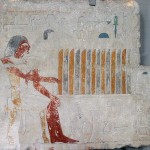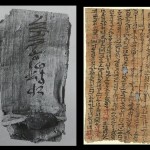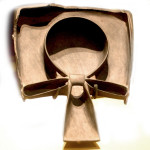
Read Like an Egyptian — Art in Ancient Egypt, Part 1
Probably only one percent of the ancient Egyptians were literate, and those literate few were royalty, nobility, upper-crust managers and administrators, at least some of the top military people, full-time priests and scribes. But many people could “read” what they were seeing, and understand it without knowing how to read hieroglyphs. The ideas and symbolic iconography were grounded in their culture; the art spoke to them even if their knowledge of the written text was, for the vast majority of the public, rudimentary at best — no doubt limited to a few basic glyphs. [more…]

Egyptologically Speaking: Interview with Dr Garry Shaw about his book “The Egyptian Myths”
In March 2014, Dr Garry Shaw’s new book was published in hardback. The Egyptian Myths: A Guide to Ancient Gods and Legends is Dr Shaw’s third sole-authored book, and his second aimed at the general public. An introductory guide to ancient Egypt’s myths, it does not duplicate existing books, offering instead a different way of approaching the central beliefs that made up Egypt’s formal religion. In this interview Dr Shaw discusses both his book and future projects. The questions were contributed by a number of readers, both from Egyptological and from Egyptological’s Facebook page, for which many thanks. [more…]
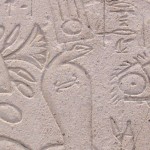
Meretseger: She Who Loves Silence. The Cobra Deity at Deir el-Medina
In the Western world the cobra rarely inspires sentiments of benevolence, warmth or good intentions. It is not a cuddly beast. Matters were more ambivalent in ancient Egypt where a range of wild animals were identified with deities imbued with admired values of physical strength, protection and courage, as well as less obviously admirable qualities like aggression, retribution, vengeance and retaliation. Like Sobek, the crocodile deity, and Sekhmet the lioness, the cobra deities comprised a mixture of attributes that centred on their fierce ability to defend themselves and to strike, hissing and spitting poison, to annihilate their aggressors. [more…]

The Significance of the Crossed Arms Pose – Part 2: Osiris, The Osiris and the Osirides
Is it a futile activity to ask, as I do in this series of articles, “What is The Significance of the Crossed-Arm Pose?” It might be argued, for instance, that variations in the pose at death exhibited by royal mummies simply reflect what embalmers decided to do on the day, or at least the customary practice of a particular undertaker. Similarly, it might be argued that each individual anthropoid coffin might be expected to reveal some unique design characteristic, and that no significance should be attached to the specific hand/arm pose depicted on the lid. [more…]
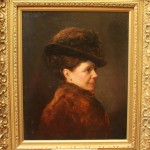
Marianne Brocklehurst and the West Park Museum, Macclesfield. Part 2
In part 1 I looked at how Marianne Brocklehurst acquired a collection of some 500 Ancient Egyptian objects during the three trips to Egypt that she records in her diary, cartoons, sketches and watercolours. In this section I look at the museum and the collection that Marianne and her brother Francis built for the benefit of the residents of Macclesfield in northwest England. [more…]
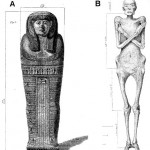
The Significance of the Crossed Arms Pose in the New Kingdom – Part 1
Amongst the many miracles through which delicate objects are preserved from ancient Egypt down into modern times, perhaps the most remarkable is the survival of the mortal remains of a virtually complete sequence of New Kingdom rulers. These kings, along with a number of queens and lesser royalty – who date from the end of the Seventeenth Dynasty through to the start of the Twenty-Second Dynasty – are generally referred to as the Royal Mummies, and were for the most part recovered from the Royal Cache of 1881 (in tomb TT320), and the Second Royal Cache of 1898 (in tomb KV35, the tomb of Amenhotep II). [more…]
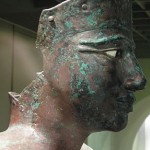
Labib Habachi A Life to Know…. Part 1
The story of Labib Habachi was predictable (Figure 1). For centuries Egyptians suffered from the prejudicial views of foreigners arriving in their country. Some came in search of treasure, others in pursuit of knowledge and many simply to pass time because they had the wealth to do so. Half-hearted efforts were made by a few to train Egyptians as excavators, such as when a University was opened in 1869 in Bulaq. Lacking support and adequate funding it proved unsuccessful, closing its doors in less than five years. [more…]
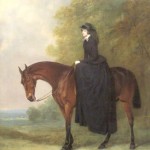
Marianne Brocklehurst and the West Park Museum, Macclesfield – Part 1
Marianne Brocklehurst was the daughter of a wealthy Victorian silk manufacturer (figure 1). On the one hand she was, by all accounts, charming, bright, and full of curiosity, with a love of travel and history. She was articulate, an engaging writer and a talented painter and cartoonist. But although her portraits show a beautiful face, Marianne had side to her that was far from angelic side to her. Travelling to Egypt in the early 1870s she became a self-confessed amateur smuggler, enthusiastically joining in with the popular pastime of purchasing black-market objects to take home. [more…]
 By
By 